For 700 years the Dutch have developed their expertise in keeping their country dry. It began with cordoning off sections of the shallow sea, draining them dry, and building a bigger country.
Now, no place in Europe is under greater threat than this waterlogged country on the edge of the continent. It’s a constant battle as climate change with its rising sea levels makes its impact felt on sea-level communities around the globe. The Dutch (famous for their frugality, inventiveness and foresight) are forced to invest billions of euros to move mountains of sand to fortify their dikes and protect their next generation.
Fertile polder farmlands
‘Netherlands’ literally means ‘lower countries‘ in reference to its low elevation and flat topography. Most of this small country (in fact 27% of it) is actually below sea level, with only about 50% of its land exceeding 1 metre above sea level.
Of the country’s 17.4 million people, 21% lives in areas below sea level. Most of the areas below sea level, known as polders, are the result of gradual and painstaking land reclamation from water. Today’s wide open, fertile fields once marked the bottom of the seabed.
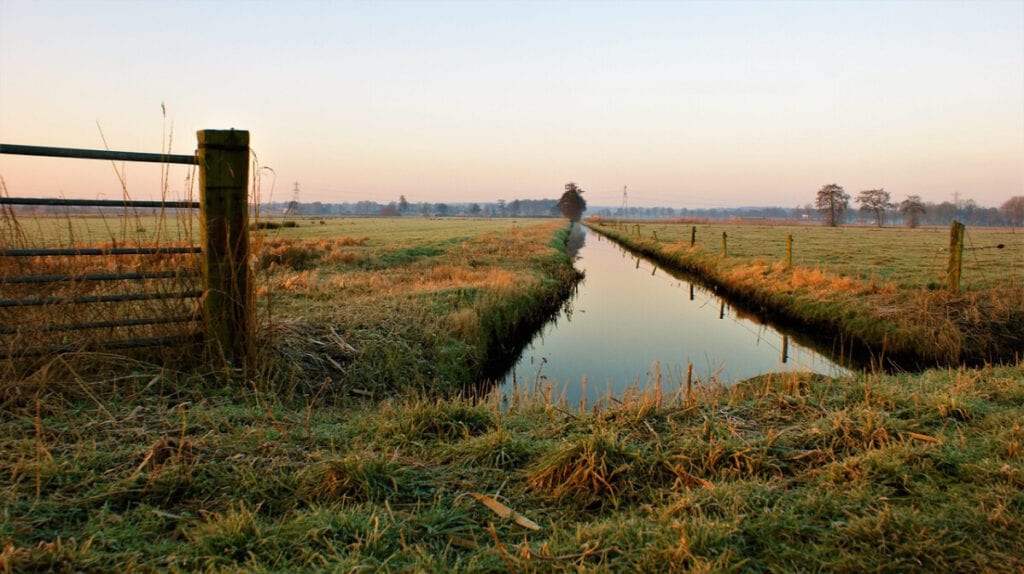
Today the Netherlands is twice the size it was 400 years ago! As recently as 1986, the Netherlands proclaimed the 12th and youngest province of Flevoland, but they didn’t do that by annexing any of their neighbour’s territories. Flevoland was created on land that was mostly reclaimed from the sea in the 1950’s and 1960’s, where the former Zuiderzee was.
Over many centuries the Dutch and their ancestors have had an ongoing battle with the North Sea
They’ve had to build mighty dikes to protect their communities, and worked to hold back and reclaim land from the sea for over 2000 years, thus affirming the old Dutch adage ‘God created the Earth, but the Dutch created the Netherlands.’
Around 400 BC, the Frisians were first to settle the Netherlands. It was they who built terpen, which were earth mounds upon which they built their villages, providing safe ground during storm surges, high tides and sea or river flooding. Small dikes were also built around this time, measuring about 70 centimetres.
On December 14, 1287, the terpen and dikes that held back the North Sea failed, and water flooded the country. Known as the St. Lucia’s Flood, it killed over 50,000 people and is considered one of the worst floods in history. A result of the St. Lucia’s Flood was the creation of a new inland sea, called Zuiderzee.
This event also created direct sea access for the village of Amsterdam, allowing its development into a major port city. Since the 1200s, the Dutch employed the rotator power of windmills to drain the low-lying, waterlogged land and expose the fertile soil. By diverting water upwards and away from marshes by giant Archimedes screws, windmills worked faithfully to power the creation of the Netherlands.
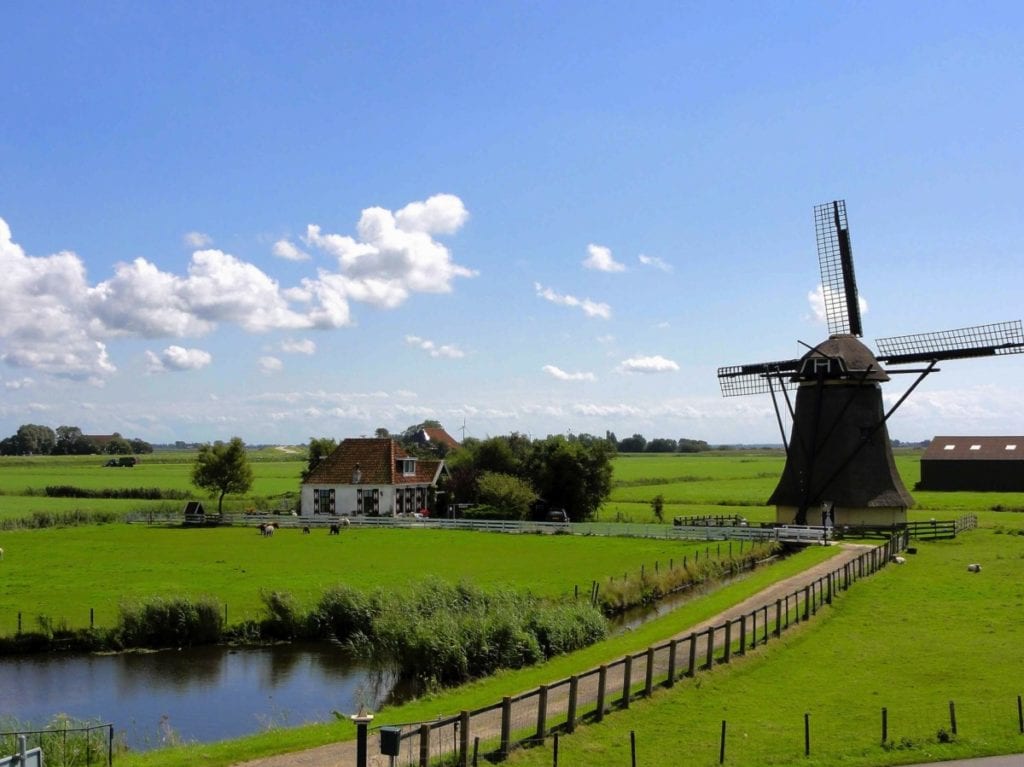
These Dutch icons were used for centuries to drain peatland for grazing and agriculture (these days it’s done by electrical and diesel-driven pumping stations). For the next few centuries, the Dutch worked to push back the water of the Zuiderzee, building dikes and creating polders.
Storms, high tides and deep water
Storms and floods in 1916 provided the impetus for the Dutch to start a major project to reclaim the Zuiderzee. From 1927 to 1932, a 30.5 km long dike called Afsluitdijk was built, turning the Zuiderzee into the IJsselmeer, a freshwater lake. On February 1, 1953, another devastating flood hit the Netherlands.
Caused by a combination of a storm over the North Sea and spring tide, waves along the sea wall rose to 4.5 meters. In some areas, the water rose above existing dikes and flooded unsuspecting, sleeping towns. Just over 1,800 people in the Netherlands died, 72,000 people had to be evacuated and thousands of livestock died. This devastation prompted the Dutch to pass the Delta Act in 1958, changing the structure and administration of the dikes in the Netherlands.
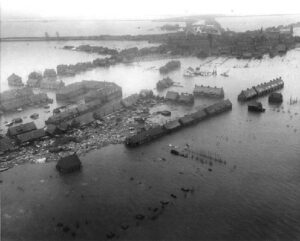
Monumental marvels of the modern world
In turn, this new administrative system created the project known as the North Sea Protection Works, which included building a dam and barriers across the sea. The Zuiderzee and Delta Works (the world’s biggest storm surge barrier) took half of the 20th century to complete (ended 1997), and together these vast engineering feats are considered one of the Seven Wonders of the Modern World.
It’s a vast and complex system of 13 dams, floodgates and storm surge barriers (massive, moveable structures which shut (automatically or otherwise) during extreme sea levels). It included the laying of 16.4 km of dikes and around 300 structures, having reduced the risk of flooding to one in 4,000 years.
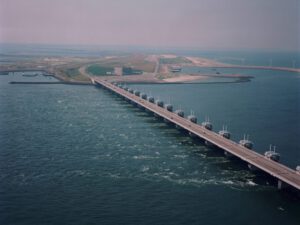
The Maeslant storm surge barrier was the final stage of the Delta Works, and was built to protect Rotterdam – the most important port in Europe, serving tens of thousands of ships from around the world and supplying pretty much everything to everywhere. The idea behind the barrier was unprecedented — a monumental gate with two arms, resting on either side of the canal, each arm as tall and twice as heavy as the Eiffel Tower. It was a staggering work of engineering, one of modern Europe’s lesser-known marvels.
Costly… but life saving!
Constructing these massive structures has cost approximately 7.4 billion euros. Now it almost never floods in the Netherlands — this being one of the most flood-prone countries where nearly 70 per cent of economic output is generated below sea level!
Minister of Infrastructure and Water Management Cora van Nieuwenhuizen believes that if you ask any Dutch person if they live below the sea level, a lot of people wouldn’t even wonder about it. The Minister adds, “If you realize that one-third of our country is below sea level and another third is at the risk of flooding, then you immediately realize why it’s always on our minds. We spent a lot of money to prepare ourselves for the future and make sure we are resilient for storms like that. That is also the reason why everyone can live here fearless.”
What do you think of the Dutch living under the sea? Were you surprised when you found out? Tell us your thoughts in the comments below!
Feature Image: Martin Terber/Flickr
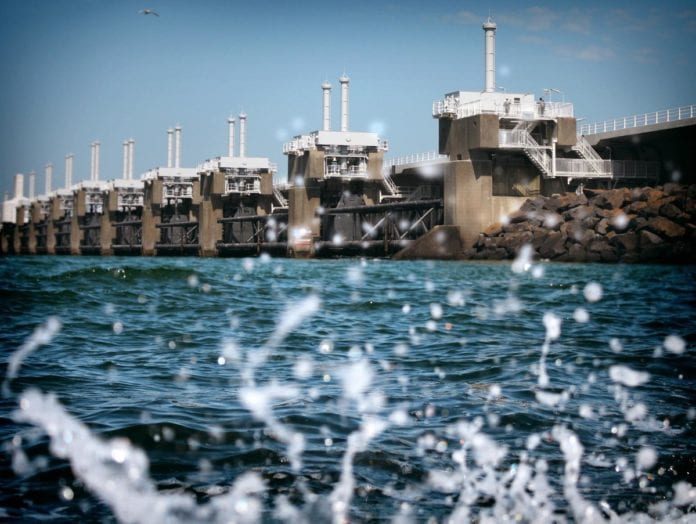
Hi
Hope you are doing well ,
we have a similar problem in India in the state of Kerala, Sea erosion, flooding are an every year phenomenon. Could you please advise some companies that could be interested in the building up of water management systems to mitigate the problem . My name is Raghunath and I work in the infrastructure industry, I believe there is big potential for such services in this country .
warm regards
raghunath
Hi Raghunath, can you please contact me at ra***********@gm***.com